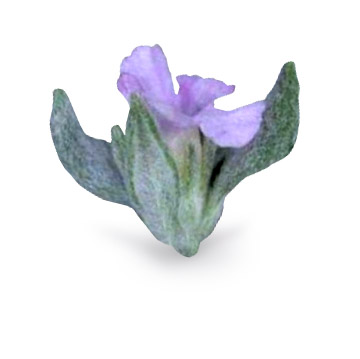Flor de Arena - Tiquilia paronychioides

Common Names: Flor de Arena, Yerba blanca, Indian tea, Tiquilia paronychioides, Flor de Arena tea
Latin Name: Tiquilla paronychioides
Origin: South America
Short Introduction
Unfortunately, there is no available information regarding the cultivation of Flor de Arena. All sources highlight that the plant is most effective when it grows wild in its natural habitat, and thus it is not purposefully cultivated.
Detailed Description
Flor de Arena is one of the most popular Peruvian herbs for cleansing and supporting the body.
Botanical Information
This is a very small plant. The leaves of Flor de Arena are tiny, greenish-gray, and oval-shaped. Both stems and leaves are covered with fine fuzz. Its flowers grow in clusters, forming grape-like inflorescences. The inconspicuous fruits contain seeds. In phytotherapy, the entire above-ground part of the plant, known as the aerial parts, is used. The fresh aerial parts are gray and odorless. Harvesting is typically done by hand-collecting wild plants.
Origin and Distribution
Flor de Arena grows wild in the high-altitude and lower regions of the Peruvian Andes. There seems to be no significant difference in the effects (or active compounds) of plants collected from other areas; the only differences are in appearance. Plants from higher elevations are smaller and darker green, while those from lowlands are gray-green and more densely covered in hairs.
Usage / Dosage
Flor de Arena is among the most recommended herbal preparations in Peru. In traditional medicine, it has been used for centuries for overall purification of the body and to support cases of increased stomach acidity, digestive trouble, obesity, insomnia, depression, and various neuroses. In acute cases, it is also recommended for inflammation of the kidneys, prostate, urinary tract, and mucous membranes.
Other sources based on folk medicine suggest using Flor de Arena’s aerial parts for cleansing the body (especially in cases of food poisoning), in digestive disorders, stomach problems, and degenerative liver diseases. One source describes the use of Flor de Arena in Bolivia as a remedy against gout (by promoting the elimination of uric acid), and for its positive effects on the nervous system, which are soothing and especially helpful before sleep.
Infusions from Flor de Arena are also commonly used to refresh the skin, as studies have confirmed their beneficial impact on the outermost skin layer in cases of dryness, fatigue, and loss of elasticity. In some areas of the Andes, these infusions are used for fevers and problems with the vascular wall and lipid metabolism.
Interest and consumption of Flor de Arena in Europe have increased significantly, prompting recent studies to accurately analyze its composition in both quality and quantity. Several studies have aimed to evaluate its purity, fatty acid and steroid composition, flavonoid and alkaloid content, mineral profile, chemical contamination, and critical toxicity of the herb, in both dry and fresh forms. Results of these studies are detailed in the section on active compounds.
Certain compounds within the aerial parts of Flor de Arena have demonstrated diuretic effects in animals (aiding water elimination), as well as strengthening effects on vascular walls and cleansing effects on the digestive tract.
Active Compounds
TLC methods utilized at research institutions have confirmed the presence of flavonoids (quercetin, rutin, and hyperoside), polyphenolic acids (rosmarinic acid, caffeic acid), sterols (beta-sitosterol, campesterol, and stigmasterol), and minerals (calcium, potassium, magnesium, sodium, copper, chromium, iron, zinc, manganese, and selenium).
Additionally, essential fatty acids have been identified (including linoleic, oleic, oleopalmitic, lauric, myristic, alpha-linolenic, ignoceric, and pentadecanoic acids). Liquid and gas chromatography confirmed and sought to quantify these substances.
Traditional Dosage
Pour a glass of boiling water over a level teaspoon of the herb, allow it to steep for about 15 minutes, then strain. It is recommended to drink 2–3 glasses daily. Another source advises mixing 5 grams of dried herb per 1 liter of water; the entire amount should be consumed throughout the day, divided into 3 servings. All sources agree that the aerial parts of the plant must not be boiled!
South American herbalists set the daily therapeutic dose at approximately 3.5 grams of fresh herb per day. Laboratory studies indicate that about 215 grams of fresh herb would be needed to cause any toxic effects in humans, making it virtually impossible to harm oneself when used sensibly and in the recommended quantity.
